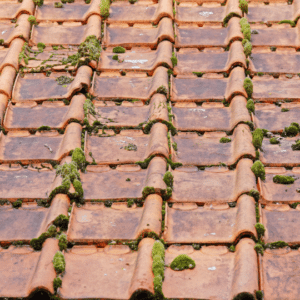Selecting the right commercial roofing system is one of the most important decisions for property owners. The best roof not only protects your building but also reduces maintenance costs, increases energy efficiency, and enhances property value. However, not all materials offer the same durability — some last 50+ years, while others require replacement within two decades.
This guide covers the longest-lasting commercial roofing materials, key factors influencing lifespan, and how to maximize your roof’s durability with smart design and maintenance.

A commercial roof’s longevity depends on material selection, installation quality, and maintenance. Even the best materials can fail if poorly installed, while regular upkeep can extend a roof’s lifespan by decades.
Different roofing materials offer varying degrees of durability:
Applying a protective coating can significantly extend the life of most roofing materials by preventing UV damage, leaks, and wear.
The structure of a roof plays a crucial role in its longevity:
A well-designed flat roof with adequate drainage can last as long as a sloped roof when paired with durable materials and protective coatings.
Even premium materials can fail if installed incorrectly. Poor workmanship leads to:
Hiring an experienced roofing contractor ensures precision installation, maximizing your roof’s lifespan and efficiency.
Regular maintenance prevents small issues from turning into expensive repairs. Best practices include:
External conditions significantly impact a roof’s durability:
Choosing materials suited to your climate—such as UV-reflective coatings in hot regions or impact-resistant options in storm-prone areas—enhances longevity.
Understanding your roofing options helps you choose a system that balances longevity, maintenance, and cost.
| Roof Type | Lifespan | Pros | Cons |
| Metal Roofing | 40-70 years | Extremely durable, fire-resistant, low maintenance | Higher upfront cost, can be noisy in rain |
| Concrete & Clay Tiles | 50+ years | Long lifespan, weather-resistant | Heavy, requires strong structural support |
| Slate Roofing | 75-100 years | Unmatched longevity, fireproof | Expensive, complex installation |
| Built-Up Roofing (BUR) & Modified Bitumen | 20-30 years | Excellent waterproofing, handles foot traffic well | Requires regular maintenance |
| Single-Ply Membranes (TPO, PVC, EPDM) | 15-30 years | Lightweight, energy-efficient | Seams may need reinforcement, puncture-prone |
Metal roofing with protective coatings offers the best balance of durability and maintenance ease, lasting 50+ years with minimal upkeep. However, concrete tiles, slate, and reinforced single-ply membranes also provide strong longevity when properly maintained.
Even if your building doesn’t have the longest-lasting roofing system, proactive steps can significantly improve its lifespan.
Roof coatings provide a seamless, waterproof barrier that extends durability by:
Choosing the longest-lasting commercial roof system involves balancing durability, budget, and maintenance. While metal, slate, and tile roofs provide unmatched longevity, flat roofing systems like TPO and BUR can be excellent choices with proper reinforcement and maintenance.
Key Takeaways:
✔ Best longevity: Metal, slate, and clay tile roofs last 50+ years.
✔ Installation matters: Poor workmanship shortens a roof’s lifespan, no matter the material.
✔ Maintenance is essential: Regular inspections and coatings prevent premature failure.
✔ Climate considerations: Choose materials suited to your local weather conditions.
A well-planned roofing system is an investment in your property’s long-term value. If you’re considering a new commercial roof or need to extend the life of your existing system, schedule a consultation with Troyer Commercial Roofing today for a professional assessment.